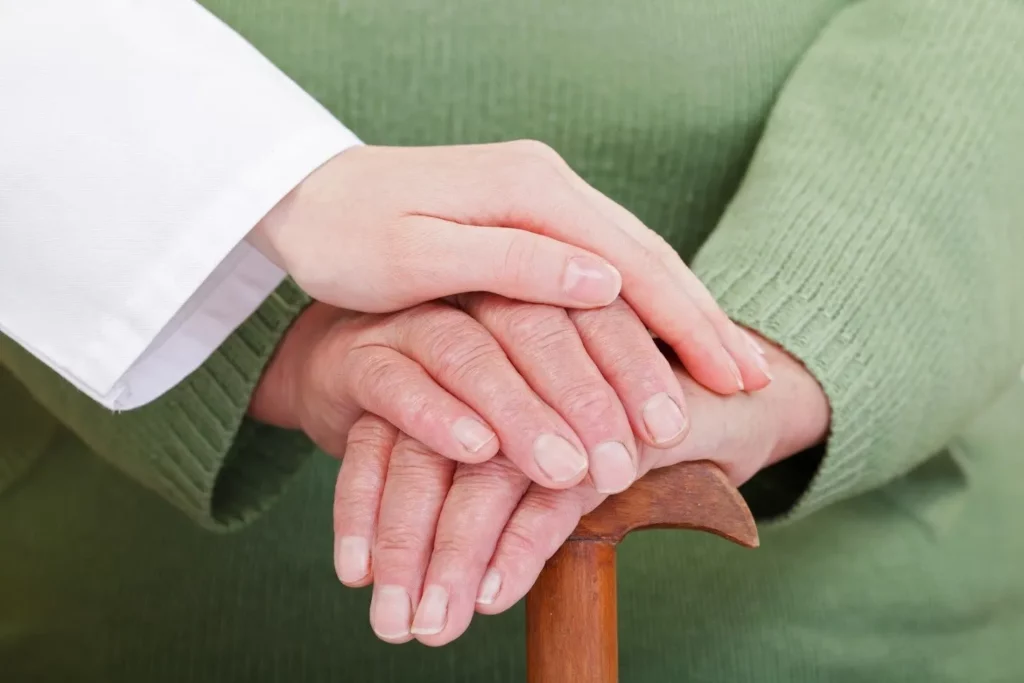Excellence in Rheumatology Care since 1977. Accepting New Patients
Jul 27, 2019
Over 50 million Americans suffer from pain and inflammation of arthritis. Many seek treatment options that do not include NSAIDs, or nonsteroidal anti-inflammatory drugs, because of existing heart disease or high blood pressure. NSAIDs can place patients at risk for elevated blood pressure and stroke. Additionally, NSAIDs should not be taken by people who are pregnant, have diabetes, bleed easily, and have liver or kidney disease.
When common over-the-counter medication like ibuprofen or naproxen is not realistic, how can you find relief from pain and inflammation associated with many types of arthritis? Fortunately, there are other treatment options out there when you’re unable to safely take a pill. Here are two alternative treatment options for arthritis when you can’t take NSAIDs that just might be the solution you are looking for.
Hyaluronic Acid Injection
Hyaluronic acid sounds intimidating, but this unique solution already exists in your own body. Your joints contain hyaluronic acid both within and surrounding each joint. There, hyaluronic acid is a gel that performs special tasks necessary for joints.
First, it lubricates joints so they can move freely and cushions them during load-bearing activities. Hyaluronic acid stimulates new growth of cartilage and bone. In the event of a joint injury, it also helps reduce inflammation and pain.
Pain from arthritis can be caused by a diminished amount of hyaluronic acid in your joints, such as osteoarthritis. With less gel to cushion and lubricate joint movement, there’s less protection within your joints. This condition not only causes pain but creates further joint degeneration. Less hyaluronic acid also means less likelihood of natural bone or cartilage regeneration.
Hyaluronic acid originally was derived from rooster crowns but is now manufactured synthetically. Hyaluronic injections are used mostly for osteoarthritis patients with pain in their knee, ankle, hip, and shoulder joints. The gel is useful both inside and surrounding the joint capsule.
Once delivered, the gel acts as normal hyaluronic acid and increases lubrication to help you move easier. Injections also help stimulate your joints to create their own acid. This phenomenon helps preserve existing cartilage and slows the progression of osteoarthritis.
Platelet-Rich Plasma Therapy
Platelet-rich plasma, or PRP therapy, is a relatively new treatment option for those that suffer from osteoarthritis. You may be familiar with platelets and plasma if you’ve ever donated blood. Blood contains both plasma and platelets. Plasma is the fluid portion of the blood that carries red and white blood cells as well as platelets.
Platelets are special because they produce proteins or growth factors that execute important tasks. Platelets stimulate tissues to regenerate the afflicted area, regulate cell division, and help your body heal. Plasma enriched with a higher-than-normal concentrate of platelets is considered rich enough for therapy use. Doctors use your own blood samples to create PRP injections.
However, PRP therapy for osteoarthritis is still so new that doctors are unsure exactly how platelets help with osteoarthritis. Doctors do know that when injected, platelets spread to affected areas and release special growth factors that:
Change the patient’s pain receptors to lessen the sensation of pain.
Stimulate new cartilage growth.
Increase hyaluronic acid production.
Prevent inflammation.
Because PRP therapy uses blood from your own body, it carries fewer risks.
Sometimes NSAIDs are not an option for pain and inflammation from certain types of arthritis. Also, cortisone shots can weaken joints over time and surgery requires long term physical therapy and rehabilitation.
If you have mild or moderate osteoarthritis and are currently unable to take NSAIDs, you may benefit from one or both of these treatment options. Visit us at Sarasota Arthritis Center for more information about these and other treatment options for osteoarthritis.

4 Common Causes of Osteoporosis
Osteoporosis causes weak bones that have a high risk of fracture. It often affects the spine and hips, but any bone suffers from osteoporosis.

3 Bad Habits Can Make Arthritis Worse
If you suffer from the pain and stiffness of arthritis, you can benefit from an understanding of how your own daily habits and behaviors contribute to your condition.

4 Reasons Why You’re Suffering From Arthritis Flare-Ups
Have you noticed that your arthritis symptoms come and go — even with medication? Flare-ups are periods of increased severity in your symptoms, such as increased stiffness, swelling, and joint pain.



We are able to see patients by appointment only. If you need to cancel an appointment, please contact our office at least 24 hours in advance. To expedite the check-in process prior to your appointment, please complete the pre-registration paperwork that will be emailed and texted to you through Phreesia. Please bring your insurance cards, method of payment, and identification with you to every appointment.